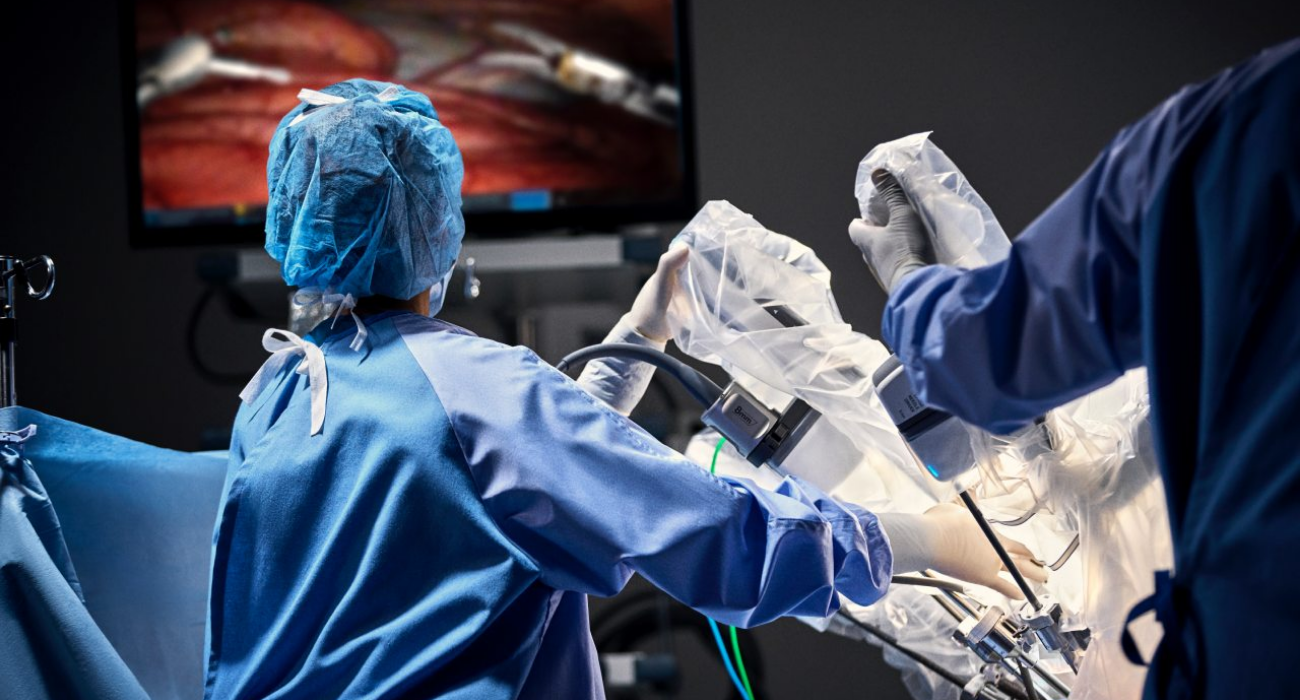In the constantly evolving field of medicine, surgical techniques have experienced remarkable advancements over the years. Among these breakthroughs is robotic colorectal surgery, a minimally invasive approach that has revolutionized the landscape of colorectal procedures. In this blog post, we will explore the fascinating field of robotic colorectal surgery, uncovering its numerous advantages, wide-ranging applications, and the promising prospects it offers within the healthcare industry.
The Evolution of Colorectal Surgery
Traditionally, colorectal surgery has been performed using open techniques, which require large incisions, longer hospital stays, and extended recovery periods. Unfortunately, these procedures often result in significant pain and scarring for patients. Thankfully, the introduction of minimally invasive techniques, such as laparoscopic surgery, has revolutionized the field. With these advanced methods, patients now experience reduced postoperative pain and faster recovery times.
Enter Robotic Surgery
Robotic surgery, also referred to as robot-assisted surgery, was developed to address the constraints of conventional laparoscopic techniques. This state-of-the-art technology seamlessly merges the precision of traditional open surgery with the advantages of minimally invasive procedures. Here's a breakdown of how it operates:
The Robotic System
A robotic surgical system consists of three essential components: the surgeon's console, robotic arms, and a high-definition 3D camera. Seated at the console, the surgeon is presented with a magnified, three-dimensional view of the surgical site. The precise movements of the surgeon's hands are translated into corresponding movements of the robotic arms, which deftly grasp and manipulate surgical instruments. Meanwhile, the camera provides a highly detailed perspective of the area undergoing the operation.
Advantages of Robotic Surgery
Enhanced Precision
Robotic surgery offers enhanced precision and control in comparison to traditional laparoscopic techniques. The robotic arms exhibit exceptional flexibility and accuracy, enabling the execution of intricate tasks within the limited confines of the abdomen.
Improved Visualization
Robotic surgery benefits from the implementation of a state-of-the-art 3D camera. This advanced technology grants surgeons a superior view of the surgical field, enhancing their ability to perceive intricate details with utmost clarity. In the context of colorectal surgery, where precision reigns supreme, this heightened visualization plays a pivotal role.
Reduced Invasiveness
Robotic surgery offers the advantage of smaller incisions compared to traditional open surgery, which leads to minimal tissue trauma and reduced scarring.
Faster Recovery
Robotic colorectal surgery offers patients the advantage of shorter hospital stays and faster recoveries. As a result, they can swiftly resume their daily lives and routines, leading to a substantial enhancement in their overall quality of life.
Applications of Robotic Colorectal Surgery
Robotic colorectal surgery has found applications in various procedures, including:
1. Colon Resection
Colon resection is a frequently performed surgical procedure used to treat conditions like colorectal cancer and diverticulitis. With the aid of robotic surgery, precise removal of the affected portion of the colon can be achieved while maximizing preservation of healthy tissue.
2. Rectal Resection
Robotic surgery is a valuable technique for treating rectal cancer and other rectal disorders. It allows for precise resection of the rectum, particularly during complex maneuvers within the pelvis. The robotic system's exceptional dexterity truly shines in these cases.
3. Treatment of Inflammatory Bowel Disease
Patients suffering from conditions such as Crohn's disease or ulcerative colitis may necessitate surgical intervention to remove affected portions of the intestine. Robotic surgery offers a superior alternative, allowing for enhanced precision and reduced trauma to surrounding tissues during these procedures.
4. Colostomy Reversal
Certain patients who have undergone temporary colostomies, a procedure involving the creation of an abdominal opening to redirect stool away from the rectum, may necessitate colostomy reversal surgery. Utilizing robotic surgery can aid in this reversal process while minimizing scarring.
The Surgeon's Perspective
From a surgeon's point of view, robotic colorectal surgery offers several advantages:
1. Enhanced Precision
Surgeons possess the remarkable ability to execute intricate maneuvers with unparalleled precision, even within the limited confines of the abdomen. This skill becomes particularly vital when navigating the intricacies of delicate structures during colorectal procedures.
2. Reduced Fatigue
The robotic console's ergonomic design effectively minimizes surgeon fatigue, enabling longer and more concentrated procedures with utmost precision.
3.Effective Outcomes
Improved visualization and precision combine to yield superior surgical outcomes and reduce the risk of complications.
4. Skill Development
Surgeons who perform robotic surgery develop specialized skills that are increasingly in demand as the technology becomes more widespread.
The Future of Robotic Colorectal Surgery
As technology continues to advance, the future of robotic colorectal surgery looks promising. Here are some developments to watch for:
1. AI and Machine Learning Integration
The incorporation of artificial intelligence (AI) and machine learning algorithms into robotic surgical systems has the potential to enhance decision-making and offer real-time feedback to surgeons, thereby further enhancing surgical outcomes.
2. Remote Surgery
Advancements in ultra-low-latency communication networks are paving the way for the potential realization of remote robotic surgery. Surgeons would be able to perform intricate procedures on patients located in different geographical areas, transcending boundaries and revolutionizing the field of medical care.
3. Miniaturization
The progress made in miniaturization holds great potential for the creation of highly compact robotic surgical systems. These advancements would enable less invasive procedures and expedite the recovery process.
4. Wider Adoption
As robotic surgical systems become more accessible and cost-effective, their adoption is likely to increase, making minimally invasive colorectal surgery the standard of care.
Conclusion
Robotic colorectal surgery is a remarkable breakthrough in medicine, providing patients and surgeons with a minimally invasive, highly precise, and expedited recovery process. While it's important to acknowledge that robotic surgery may not be suitable for everyone, consulting with a healthcare professional is crucial in determining the most appropriate course of action. With the ongoing acceptance of robotic surgery in the medical field, patients can anticipate enhanced results, diminished discomfort, and an improved overall quality of life after undergoing colorectal procedures.

